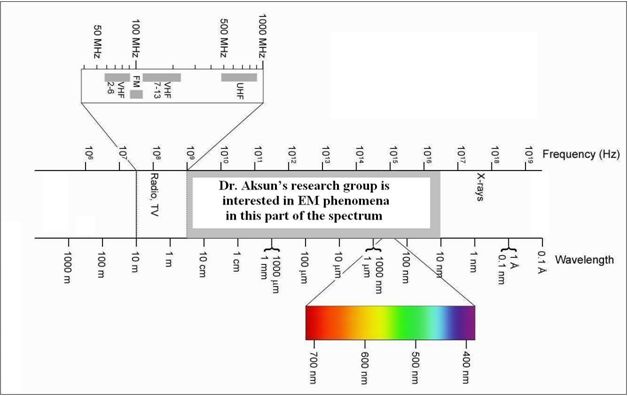
I believe stating my interests and motivations in a simple sentence would be a time-saver for those who share no common interest with me. Here is what I enjoy working and learning the most: ”electromagnetic waves and light and their interplays with all sorts of materials, natural and artificial, and their applications in engineering.” Of course, such a short and general statement needs further discussion, or perhaps more focused explanation, for the interested audience, for whom the following section was prepared. Before getting into the details of the topics of my interests, I would like to state my main motivations for electromagnetism: i. although the underlying rules of electromagnetism were set more than a century ago, the impact of these rules and the associated wave picture in the development of technology today are more pronounced than ever, like the advances in the areas of wireless communications, computer interconnects, super-resolution optical microscopy, nanophotonics, antennas for communications and optics applications, and microwave and millimeter wave devices; and ii. electromagnetics play major roles in understanding most of the natural phenomena, with the exception of those related to gravity, like rainbow, mirage on hot highways, lightning, extraordinary colors of some butterflies, biological and chemical interactions, and many more.
Among the wide variety of challenging research topics in the fields of electromagnetism and optics, here are the topics that I have been working recently:
1. Understanding the wave mechanisms in layered media, as – substrates in electronic and optic systems, – tissues in biological systems, – earth’s crust in geological systems, and many more systems can be modeled as layered media;
2. Developing electromagnetic-based accurate and efficient computational tools to help – design microwave, mm-wave and optic components, – design multifunction antennas and printed circuits;
3. Studying the mechanisms of light propagation in any natural or artificial structures, like photonic crystals, meta- materials, and plasmonic nanostructures;
4. Developing nanostructures and particles that shape the flow of light.